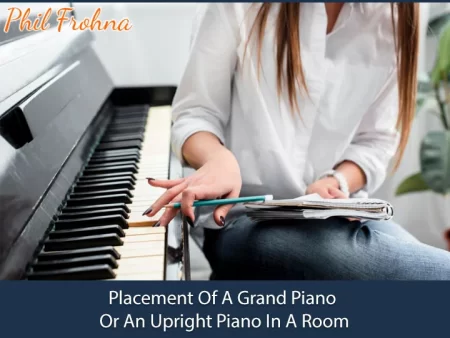 Are you looking to keep your grand piano or an upright piano in ship-shaped condition to improve its life expectancy? One of the significant factors that will affect this is where you can place the piano. It not only affects the mechanical and structural condition of the piano but also has an impact on the sound coming from it. So, it is a good idea to get it right. Let’s look at some fundamental things you need to consider for a proper piano placement within a room.
Are you looking to keep your grand piano or an upright piano in ship-shaped condition to improve its life expectancy? One of the significant factors that will affect this is where you can place the piano. It not only affects the mechanical and structural condition of the piano but also has an impact on the sound coming from it. So, it is a good idea to get it right. Let’s look at some fundamental things you need to consider for a proper piano placement within a room.
Placement of a grand piano
There are certain things you need to keep in mind about placing the grand piano physically within a room. As far as the rule of thumb is concerned, you need to have the grand pianos with their left straight edge placed against your inner wall. This is the bass side, and it must run parallel to the wall. The treble side or the open lid side should be pointing into the room. This helps in the projection of treble frequencies clearly within the room.
The lower frequency sound or the bass will bounce off the wall and return to the room. If you try to position the grand piano the other way around, you will get the treble bouncing off the wall instead of the bass. This means you will not get the optimal sound effect. If you are looking for a clear sound, you need to get the treble to carry and project inside the center of the room.
Placement of upright piano
Positioning the upright piano is relatively simpler and a lot more straightforward. Most of the upright pianos are placed up against the wall. Usually, this is an internal wall, and an external wall is not utilized for this. This helps protect the piano sound. However, there are certain “don’ts” that apply here. You need to avoid drafty spots and direct sunlight you get near the windows.
As far as the positioning is concerned, with a great deal of sound coming from the back of the piano, you need to have the instrument pointing to the room as well. This depends on the space available, though. This also makes the instrument more audible for the people sitting in the room.
Some general rules for both types of pianos
- Never place the piano near direct sunlight. There is a lot of heat generated by direct sunlight, and it dries up and weakens the glue joints and can also dry out the soundboard.
- It is a bad idea to place the piano near the window. The piano is not happy with changes in temperatures. There are changes in humidity levels happening near the window that causes the piano to swell and shrink. This will damage the tuning and negatively affect the mechanical condition of the piano.
You need to keep these pianos away from all the drafty places as a change in temperature can play havoc with the machines. Although it is unavoidable many times, less airflow near the piano is a good idea. It will avoid tuning instability and premature structural issues. If you live near Tampa, FL area and you are looking to tune your piano, get in touch with Phil Frohna Tuning for expert work.
Picture Credit: VistaCreate